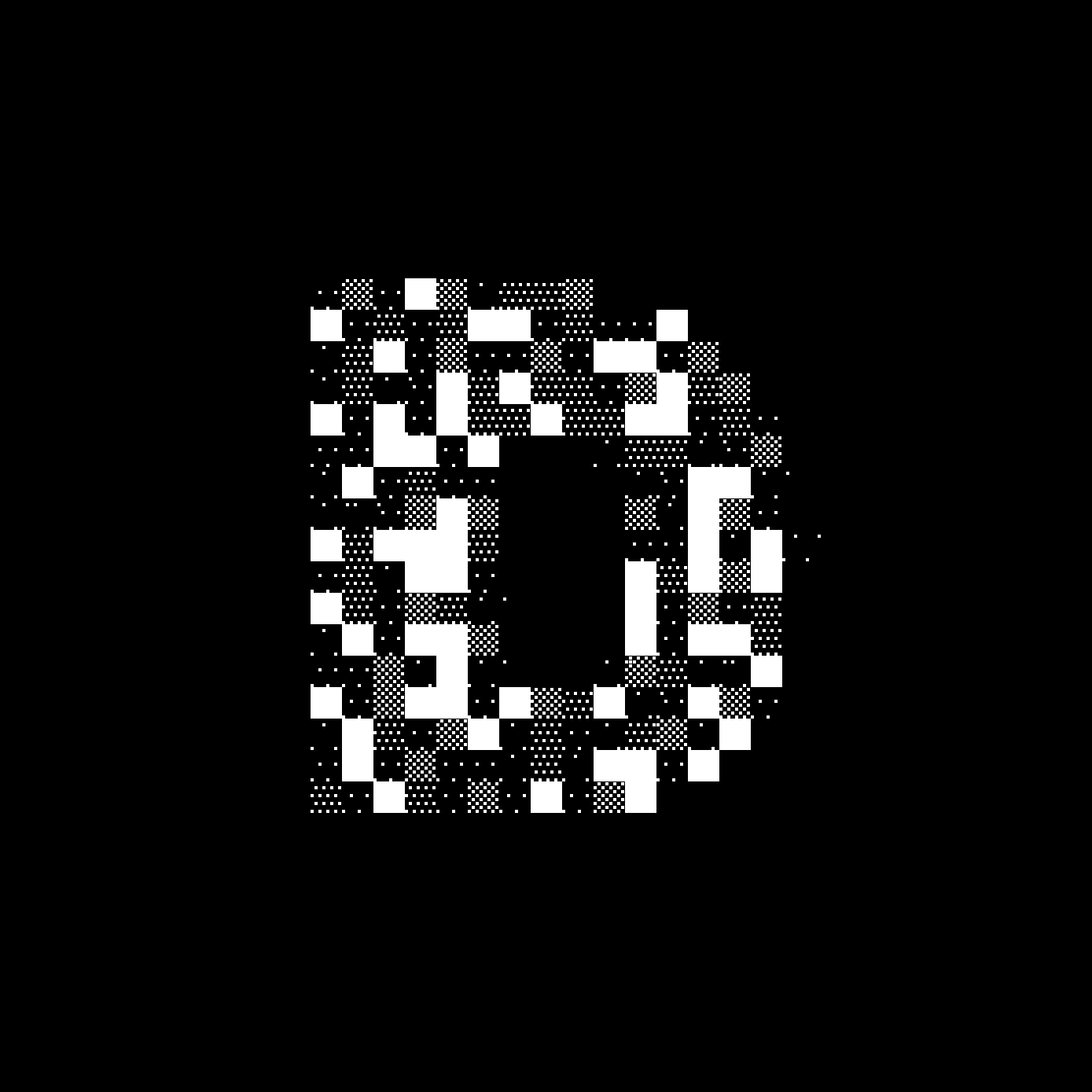Data Model
DUST is built using MUD, and so the mud.config.ts defines all the different entities and components. Here we look at 2 specific kinds of data and how to read them.
Object at Position
The entire world is a 3D grid where each [x, y, z] coordinate has a certain object (ie player, block, or air). This is what you see in the client as you look around.
For example, we can see the player is standing at [1380, 79, -2434], and there is a grass block below at [1380, 78, -2434].
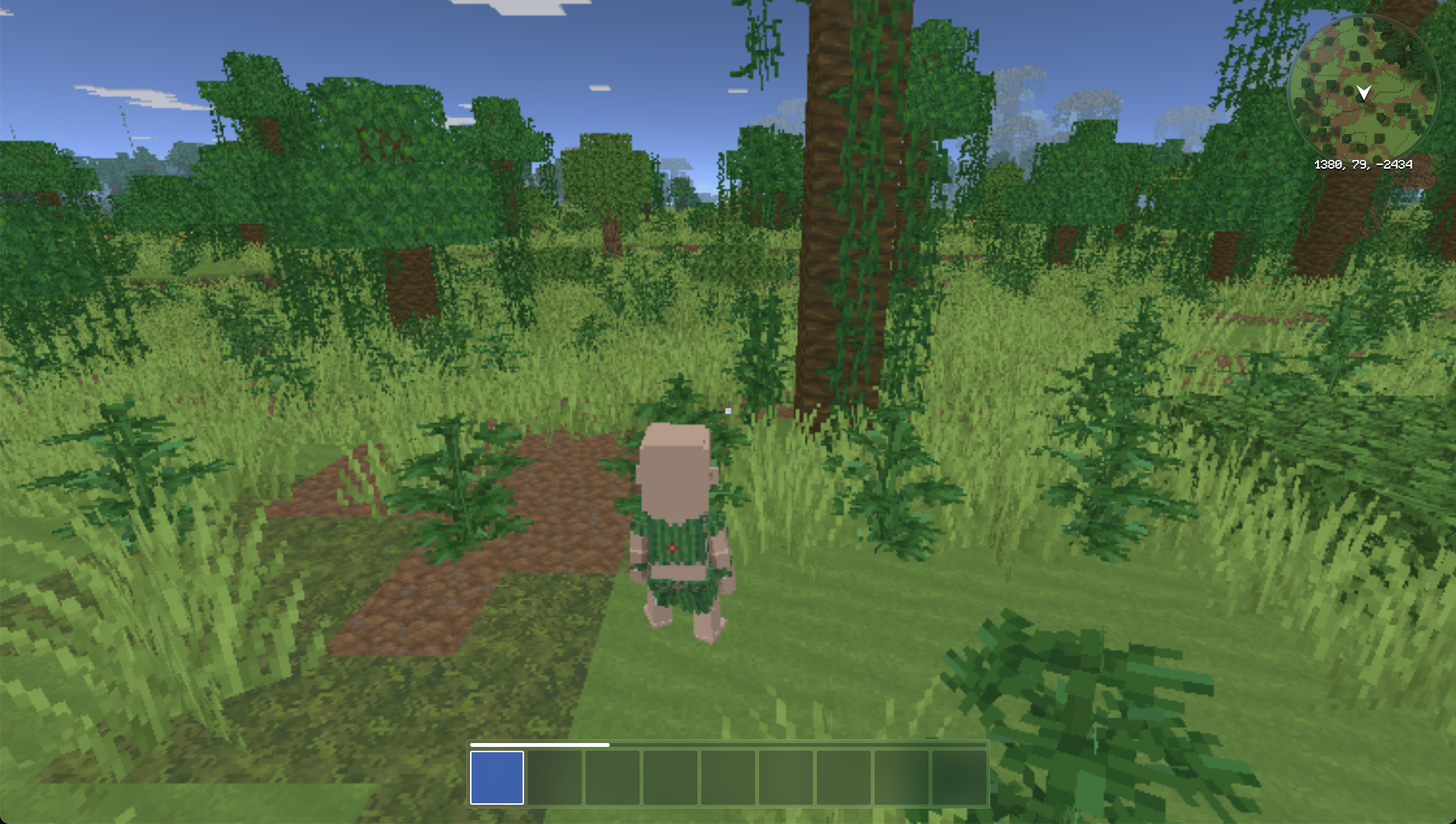
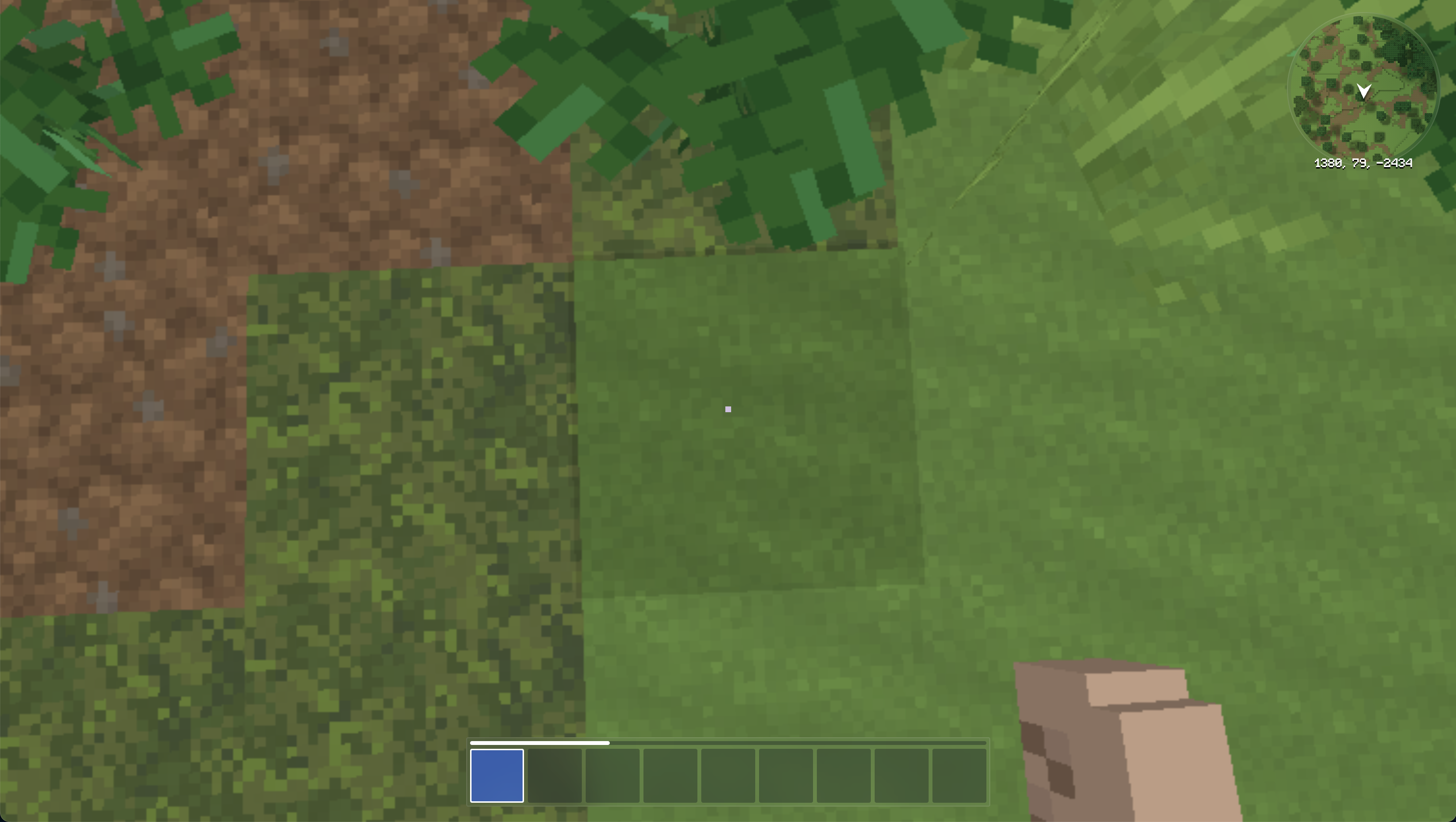
Tables
The latest object type at a coordinate can be read from the EntityObjectType table.
EntityObjectType: {
schema: {
entityId: "EntityId",
objectType: "ObjectType",
},
key: ["entityId"],
},
EntityPosition: {
schema: {
entityId: "EntityId",
x: "int32",
y: "int32",
z: "int32",
},
key: ["entityId"],
}To save on gas, this table is not prefilled with the entire map. Instead the intitial terrain is defined in the bytecode of a smart contract (each chunk has its own contract).
Reading Via Explorer
Which object is at this position?
- Get the entity id corresponding to the coordinate using the
encodeBlockutil:
world.utils.encodeBlock([1380, 78, -2434]);This returns 0x03000005640000004efffff67e00000000000000000000000000000000000000
- Filter the
EntityObjectTypetable using this entity id:
SELECT "entityId", "objectType" FROM "EntityObjectType" WHERE "entityId" = '0x03000005640000004efffff67e00000000000000000000000000000000000000';
This shows the object type is 21.
- Check which object this id is from ObjectType.sol
We can see this coordinate has grass!
ObjectType constant Grass = ObjectType.wrap(21);Which coordinate is this player at?
- Get the player entity id using the
encodePlayerutil:
world.utils.encodePlayer("0xcD0DD7a799b8281dddA11c5AA54FE8A2D05aAcF4");This returns 0x01cd0dd7a799b8281ddda11c5aa54fe8a2d05aacf40000000000000000000000
- Filter the
EntityPositiontable using this entity id:
SELECT "entityId", "x", "y", "z" FROM "EntityPosition" WHERE "entityId" = '0x01cd0dd7a799b8281ddda11c5aa54fe8a2d05aacf40000000000000000000000';
This shows the player is at [1380, 79, -2434].
Reading In A Program
import { EntityId, EntityTypeLib } from "@dust/world/src/types/EntityId.sol";
import { ObjectType } from "@dust/world/src/types/ObjectType.sol";
import { Vec3 } from "@dust/world/src/types/Vec3.sol";
import { EntityObjectType } from "@dust/world/src/codegen/tables/EntityObjectType.sol";
function getObjectTypeAt(Vec3 coord) internal view returns (ObjectType) {
EntityId entityId = EntityTypeLib.encodeBlock(coord);
ObjectType objectType = EntityObjectType.get(entityId);
return objectType.isNull() ? TerrainLib.getBlockType(coord) : objectType;
}Reading In An App
import { encodeBlock, getTerrainBlockType, Vec3 } from "@dust/world/internal";
async function getObjectTypeAt(pos: Vec3): Promise<number> {
const objectTypeRecord = stash.getRecord({
table: tables.EntityObjectType,
key: { entityId: encodeBlock(pos) },
});
let objectTypeId = objectTypeRecord?.objectType;
if (!objectTypeId) {
objectTypeId = await getTerrainBlockType(publicClient, worldAddress, pos);
}
return objectTypeId;
}Inventory
Players, chests, and all pass through blocks (ie, air, water, flower, etc) can have an inventory.
Players have 36 slots
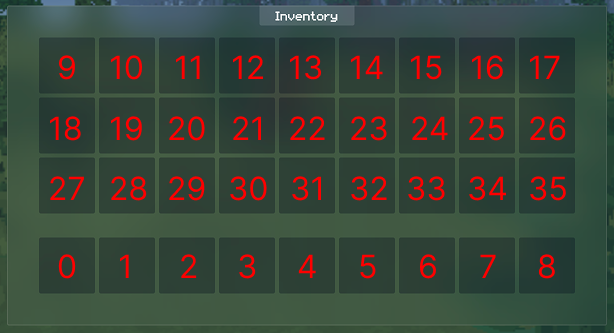
Chests have 27 slots
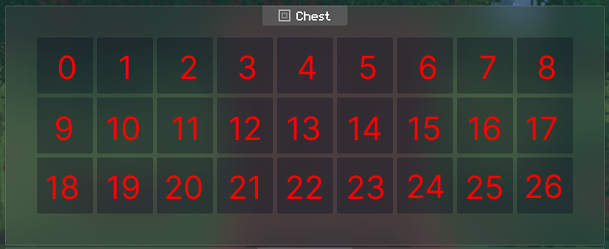
Tables
InventorySlot: {
schema: {
owner: "EntityId",
slot: "uint16",
entityId: "EntityId",
objectType: "ObjectType",
amount: "uint16",
},
key: ["owner", "slot"],
},
InventoryBitmap: {
schema: {
owner: "EntityId",
bitmap: "uint256[]", // Each uint256 holds 256 slots
},
key: ["owner"],
},Reading Via Explorer

- Get the player entity id using the
encodePlayerutil:
world.utils.encodePlayer("0xcD0DD7a799b8281dddA11c5AA54FE8A2D05aAcF4");This returns 0x01cd0dd7a799b8281ddda11c5aa54fe8a2d05aacf40000000000000000000000
- Filter the
InventorySlottable using this entity id and slot:
SELECT "owner", "slot", "entityId", "objectType", "amount" FROM "InventorySlot" WHERE "owner" = '0x01cd0dd7a799b8281ddda11c5aa54fe8a2d05aacf40000000000000000000000';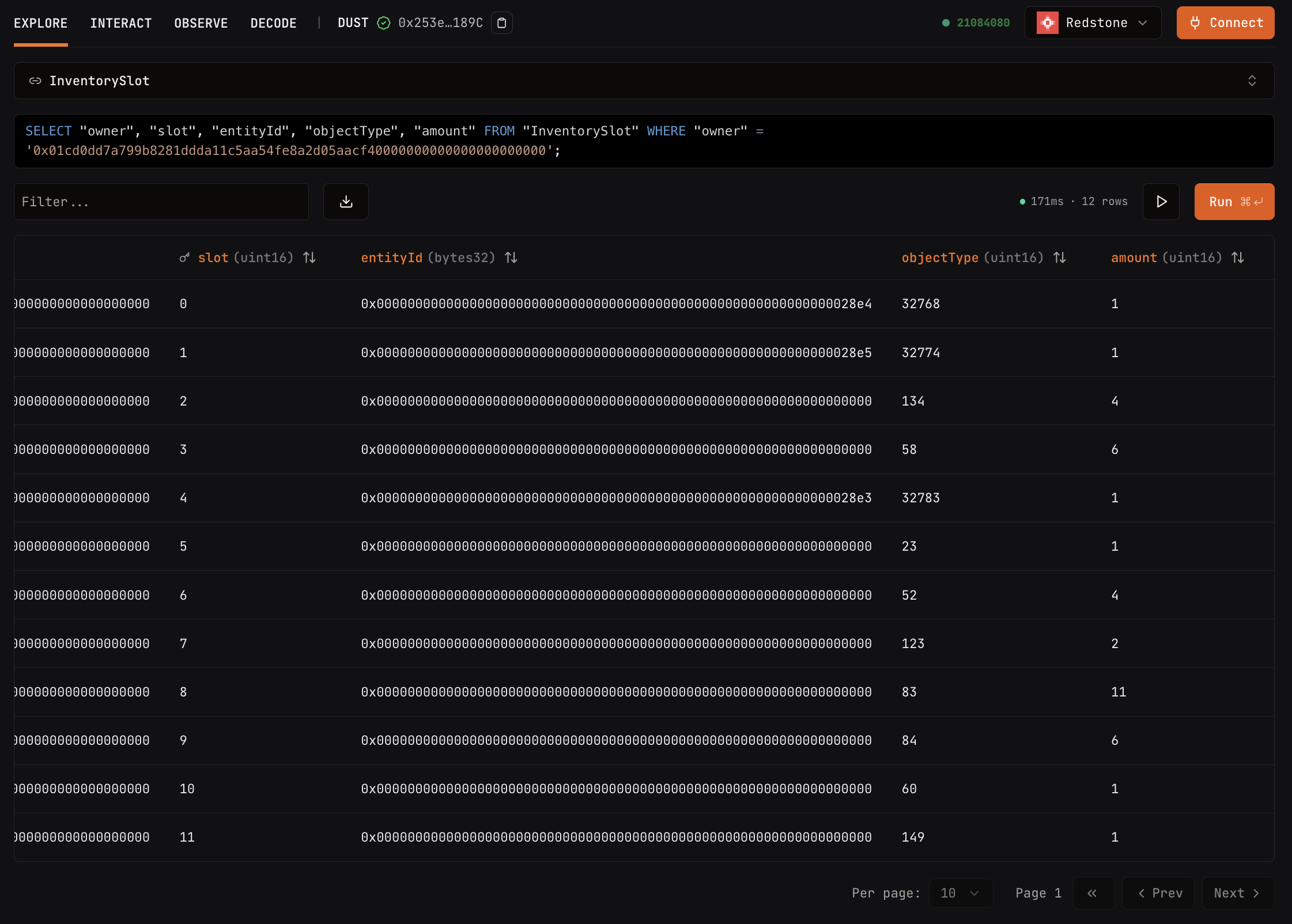
This shows all the items the player has. eg, the player has 4 WheatSeeds (id 134) in slot 2.
Reading In A Program
import { InventorySlot, InventorySlotData } from "@dust/world/src/codegen/tables/InventorySlot.sol";
InventorySlotData slotData = InventorySlot.get(EntityId.encodePlayer(0xcD0DD7a799b8281dddA11c5AA54FE8A2D05aAcF4), 1);Reading In An App
import { getRecord } from "@latticexyz/store/internal";
import { encodePlayer } from "@dust/world/internal";
import mudConfig from "@dust/world/mud.config";
const slotData = await getRecord(publicClient, {
address: worldAddress,
table: mudConfig.tables.InventorySlot,
key: {
owner: encodePlayer("0xcD0DD7a799b8281dddA11c5AA54FE8A2D05aAcF4"),
slot: 1,
},
});